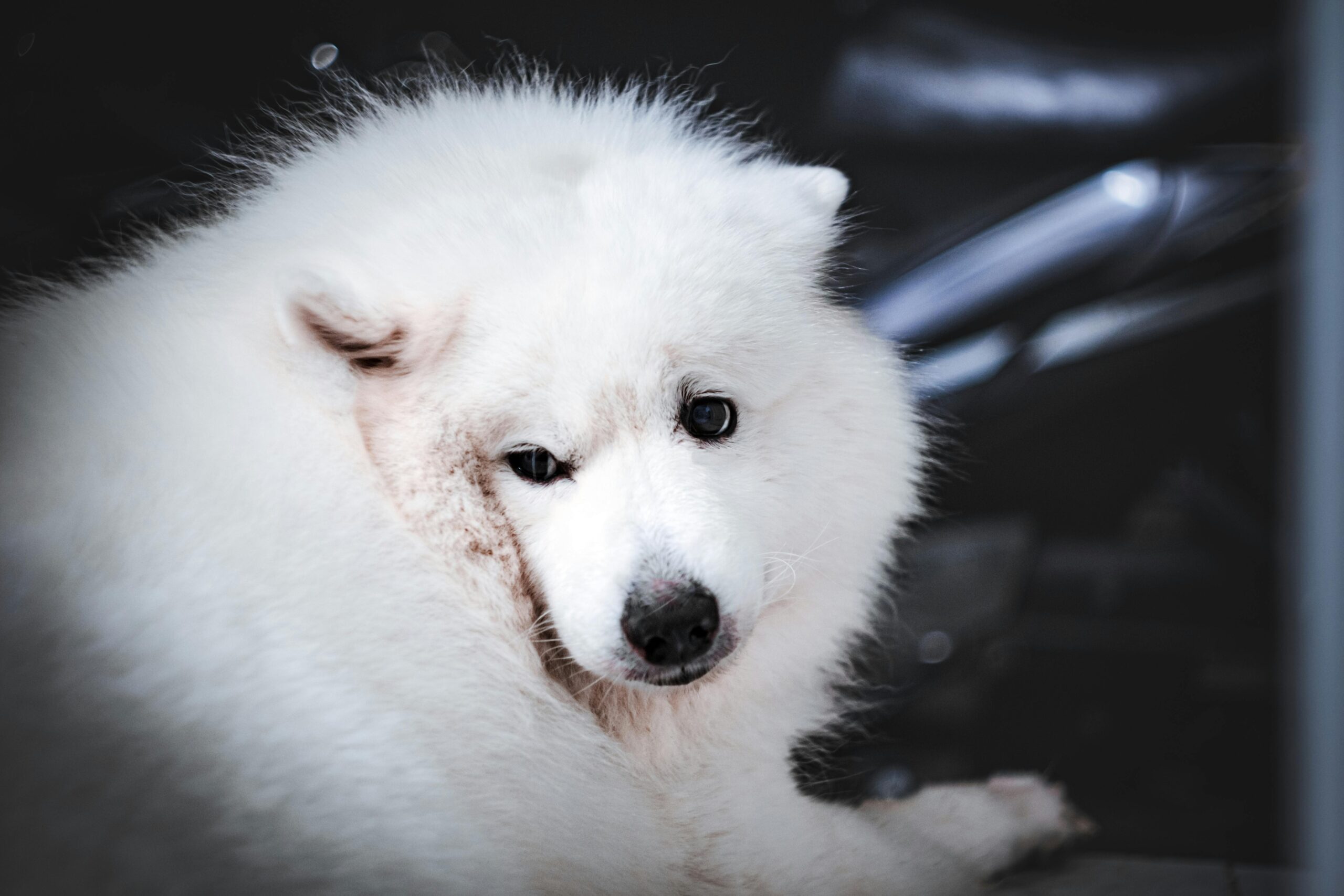Welcoming a new puppy into your home is an exciting and heartwarming experience, but those initial nights can be challenging as your furry friend adjusts to their new surroundings.
The dilemma of whether to leave your puppy to cry at night is a common concern among pet owners.
In this guide, “Should I Leave My Puppy to Cry at Night?” we’ll explore the reasons behind nighttime whining and offer 13 valuable tips to help you strike the right balance between comforting your puppy and fostering independence.
Should I Leave My Puppy to Cry at Night? – The Nighttime Dilemma

1] Understanding Puppy Whining
Alright, so picture this: your adorable pup is letting out those nighttime whimpers.
What’s going on? Well, it’s their way of sending you a message.
Maybe they’re yearning for some comfort, a bit of attention, or they’re politely asking for a late-night bathroom break.
Knowing what’s behind those whines is like deciphering a secret code.
Once you get it, you’re on your way to becoming a pup-whisperer extraordinaire.
2] Establishing a Comfortable Sleeping Area
Overview: “Create a cozy and secure sleeping area with a comfortable bed and familiar scents.”
Your pup’s version of heaven on Earth?
A cozy sleeping spot.
Imagine a bed that’s softer than a cloud, blankets that feel like a warm hug, and familiar scents that say, “Yep, this is home.”
Creating this doggy haven ensures your pup feels secure and cherished.
It’s their very own retreat where dreams are made, and whining takes a back seat.
3] Gradual Crate Introduction
Now, let’s talk crates. Some pups see it as their little castle; others might need a gentle nudge to appreciate its charm.
Introduce it gradually during daylight hours.
In the dance of familiarity, the crate becomes a comforting partner in the nocturnal routine.
Toss in some treats, sprinkle a bit of praise, and voila – you’ve just turned the crate into the VIP section of your pup’s world.
Come nighttime, the crate becomes a familiar and comforting den.
4] Nighttime Bathroom Breaks
Here’s a puppy fact: those bladders are tiny.
Nighttime cries might just be a coded message saying, “Human, it’s bathroom time!”
Taking your furball out for a pre-bedtime bathroom break is like hitting pause on the nighttime whining soundtrack.
It’s a small detour that ensures your pup can sleep through the night without any urgent wake-up calls.
Tip: “Recognize smaller bladders in puppies, requiring more frequent nighttime breaks.”
5] Comforting Bedtime Routine
Routines aren’t just for humans; they’re a pup’s love language too.
Imagine a bedtime ritual – a mix of gentle play, a bathroom break (of course), and a bit of quiet time.
It’s like telling your pup, “Hey, it’s winding-down o’clock!”
Predictability is your secret weapon for a smooth transition into dreamland.
6] Warmth and Comfort
Let’s talk ambiance.
Your pup’s sleeping area isn’t just cozy; it’s the Ritz-Carlton of doggy comfort.
Adjust the room temperature, fluff up the blankets, and create a sleep haven that even you’d be jealous of.
A comfortable environment means less fidgeting and more uninterrupted Zs for your fur baby.
• Adjust room temperature if needed • Provide additional warmth with a cozy blanket • Comfortable environment reduces the likelihood of crying, promoting a peaceful night's sleep.
7] Interactive Toys for Distraction
Think of toys as your nighttime allies, swooping in to save the day (or night).
Interactive toys aren’t just for daytime fun; they’re the secret weapons against midnight restlessness.
Chew toys or puzzle feeders are like the superhero capes that keep your pup entertained and, more importantly, quiet.
It’s a win-win.
8] Avoiding Excessive Attention
Now, here’s the thing – we all love attention, but too much of a good thing?
Even pups need their beauty sleep.
While it’s crucial to reassure your little one, avoid turning nighttime into a marathon of cuddles.
Tip: “Respond to cries with reassurance but avoid prolonged interactions to prevent attention-seeking behavior.”
We’re all about comfort, but a bit of independence is cool too. Balance, as they say, is the key.
9] Reassuring Presence
Overview: “Gradually withdraw your presence if your puppy is anxious during the night.”
Let’s ease into the concept of alone time, shall we?
If your pup’s a bit on the anxious side, the gradual withdrawal strategy is like a trust-building exercise.
Start by being the guardian angel nearby, then, bit by bit, let your fur baby spread those wings.
It’s like saying, “You got this, little one!”
10] Positive Reinforcement for Quiet Moments
Quiet is golden, especially when it comes to nighttime serenades.
When your pup decides to press the mute button, it’s time for a celebration.
Positive reinforcement is your go-to move here.
Treats, praise, maybe a little happy dance – whatever makes your pup’s tail wag.
Let’s teach them that tranquility is a treat-worthy talent.
Quote: “In the applause of reinforcement, your puppy finds motivation for a serene nighttime performance.”
11] Consistent Responses
Imagine training for a marathon – consistency is the secret sauce.
The same goes for responding to nighttime whining.
Whether it’s a comforting hug, a swap of toys, or a ninja exit, sticking to the plan is what builds trust.
Mixed signals? Not in our bedtime routine.
Consistency is king.
Tip: “Whether providing comfort, redirecting with toys, or withdrawing your presence, consistency avoids mixed signals.”
12] Professional Consultation
Okay, so despite all your efforts, the nighttime saga continues.
Enter the pros – the doggy gurus, the nighttime whisperers.
A vet or a seasoned trainer might just have that golden nugget of wisdom to turn your pup into a bedtime maestro.
In the consultation of experts, the nocturnal symphony finds a conductor, guiding your puppy to peaceful dreams
Because sometimes, even the best of us need a little expert advice.
13] Patience and Understanding
Last but definitely not least – patience and understanding.
Your fur baby is navigating a new world, and you’re their guiding star.
Embrace the journey, celebrate the small victories, and remember, a well-rested puppy is a happy puppy.
You’ve got this!
• Recognize that your puppy is adapting to a new environment • Nighttime whining is common during this process • With time, consistent efforts, and a patient approach, puppies often outgrow nighttime whining as they become more comfortable and secure.
Should I Leave My Puppy to Cry at Night? – FAQs
Is it normal for puppies to cry at night?
Yes, it’s normal for puppies to cry at night, especially during the initial days in a new environment. Understanding their needs and implementing comforting strategies can help ease this behavior over time.
How long does nighttime whining typically last?
The duration of nighttime whining varies among puppies. Consistent training and a supportive environment can expedite the process, with many puppies naturally adjusting within a few weeks.
Should I let my puppy sleep in bed with me?
The decision to let your puppy sleep in bed with you is personal. While some owners find it comforting, others prefer to establish a separate sleeping area for their puppy. Consider what aligns with your preferences and promotes a restful night for both you and your puppy.
Can leaving a puppy to cry at night lead to separation anxiety?
Leaving a puppy to cry at night, if not addressed appropriately, can contribute to separation anxiety. Gradual introductions, positive reinforcement, and consistent responses can help prevent and address separation-related behaviors.

Conclusion:
Navigating the nighttime cries of a new puppy requires a delicate balance of compassion and training.
As you implement the 13 tips provided in this guide – “Should I Leave My Puppy to Cry at Night?”, remember that patience is key.
Establishing a routine, creating a cozy sleeping environment, and gradually encouraging independence will contribute to a smoother transition for both you and your furry companion.
By addressing your puppy’s needs with care and consistency, you can build a strong foundation for a peaceful and restful night’s sleep for everyone involved.





